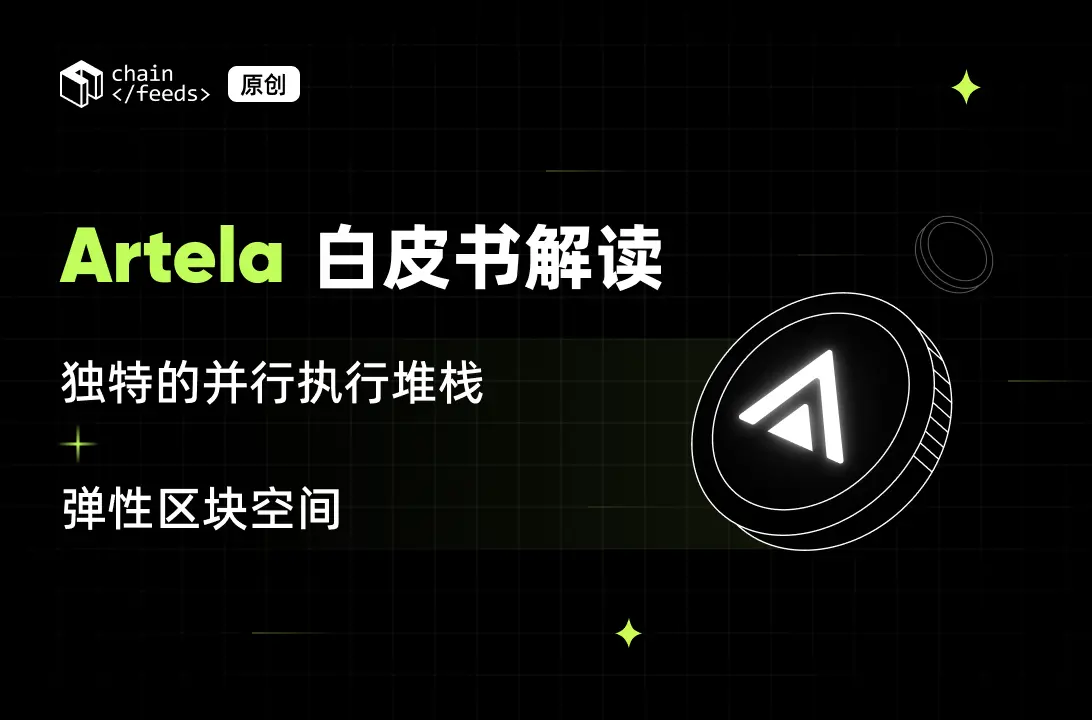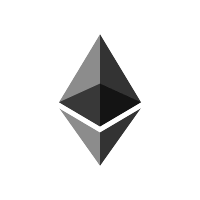Dialogue Taiko: What is a multi-proof route? How is it related to Ethereum's finality?
Author: LINDABELL
On May 23, Taiko announced the first round of airdrop query page, which sparked a debate in the community about fairness. In response to its founder Daniel Wang, the community seems unconvinced.
At the same time, on May 25, Ethereum co-founder Vitalik Buterin proposed the first block on the Taiko mainnet as a block proposer, stating in the block's note: "I am glad to see Taiko launched as a Based Rollup platform. Ethereum benefits from the adoption of various L2s, and I appreciate that Taiko is one of the first projects to move in this direction."
After the Cancun upgrade, the Ethereum ecosystem has shifted its focus back to the L2 space. Unlike other Rollup projects, Taiko is developing a Based Rollup solution and has attracted the favor of several VCs, including Sequoia China, Generative Ventures, Hashed, Lightspeed Faction, Token Bay Capital, and Flow Traders. This raises curiosity about what makes Taiko special compared to other well-known ZK scaling projects and how its scaling solution will impact the L2 ecosystem.
With these questions in mind, ChainFeeds spoke with the Taiko team to discuss the origins, vision, and Ethereum scaling solutions of Taiko.
Key Excerpts:
- Taiko founder Daniel Wang hopes to scale Ethereum without sacrificing decentralization, achieving a coexistence of centralized and decentralized layer two networks, allowing dApps to make informed decisions between the two options.
- Contestable Rollup is an abstraction of zkRollup and Optimistic Rollup. In the future, if zero-knowledge proofs become cheap enough, Contestable can be configured as a pure zkRollup.
- During the development of SGX proofs, the Taiko team gradually realized the importance of stateless clients and firmly believes in the feasibility of running stateless clients to generate zero-knowledge proofs in zkVM in the future.
- Taiko has launched its mainnet, where block submissions and proofs are permissionless, but contracts still have owners. The Taiko team plans to transfer contract ownership to Taiko DAO about a year after the mainnet launch, completely relinquishing ownership and control of the network.
Taiko Origins: Scaling Ethereum Without Sacrificing Decentralization
Taiko founder Daniel Wang created the first Ethereum-based DEX protocol Loopring built on ZKRollup in 2017. However, the architecture of Loopring did not align with Daniel's vision. Daniel wanted to scale Ethereum without sacrificing decentralization, achieving a coexistence of centralized and decentralized layer two networks, allowing decentralized applications to make more informed decisions between the two options. However, Loopring could only be built as a non-programmable layer two network, lacking a virtual machine structure, and its block production mechanism was centralized to reduce costs.
Before founding Taiko, Daniel Wang and like-minded developers had multiple discussions, focusing mainly on two directions: decentralized social networks or the infrastructure needed for decentralized social networks, "permissionless layer two networks." After careful consideration, they generally believed that venturing into decentralized social networks posed high risks, while permissionless layer two networks offered greater differentiated competitive space, leading to the birth of Taiko.
Taiko is a Type-1 zkEVM, providing the same opcodes and functionalities as Ethereum, ensuring high compatibility with the existing Ethereum ecosystem. The Taiko team emphasizes that the initial design of Taiko was based on the structure of Based Rollup, where Ethereum validators are ultimately responsible for block production in Taiko, achieving proposer decentralization. As of now, Taiko has over 30,000 decentralized proposers and more than 14,000 decentralized validators. In March of this year, Taiko completed a $15 million Series A funding round led by Lightspeed Faction, Hashed, Generative Ventures, and Token Bay Capital, bringing the total funding amount to $37 million. Regarding the favor from VCs, the Taiko team stated that they highly value the strategic synergy between investment institutions and Taiko. Additionally, Taiko's rapid rise to become one of the largest Discord communities globally (with over 1.07 million members) and its ability to attract hundreds of dApps for deployment can be attributed not only to the advantages of Type-1 and fully decentralized architecture but also to the support from investors.
Exploring Ethereum Rollup Design Framework: BCR and BBR
One of the main differences between Taiko and other Rollups is its choice of the Based Rollup mechanism, which does not rely on centralized sequencers but instead depends on Ethereum validators to order transactions and blocks. Furthermore, Taiko co-founder Daniel Wang proposed the concept of "Based Contestable Rollup (BCR)" at the end of 2023. This concept introduces a Contestable mechanism, as ZK-EVM code cannot be error-free forever, and since Taiko is decentralized with a low fault tolerance, a cautious approach is necessary.
The Taiko team also elaborated on the main considerations for choosing the Contestable design:
- First, Based Rollup is permissionless and must introduce "higher-level proofs" to address potential bugs in the software. This avoids the need for centralized networks to halt operations for data correction. Of course, as the Taiko network runs longer, this error correction mechanism can gradually be removed.
- Second, while SGX proofs are thousands of times cheaper than zero-knowledge proofs, they are not the most ideal or decentralized verification method. The Contestable design allows challenges to be raised when doubts about SGX proofs arise, requiring the use of higher-level proofs to re-verify blocks, thereby reducing costs while enhancing the credibility of the verification.
- Finally, Contestable Rollup offers flexibility and scalability, serving as an abstraction of zkRollup and Optimistic Rollup. For example, if zero-knowledge proofs become cheaper in the future, we can configure Contestable Rollup as a pure zkRollup or configure it as a pure Optimistic Rollup based on application needs, thus adapting to different verification requirements.
Regarding the architecture of Based Contestable Rollup, Daniel Wang provided a detailed overview in the article. BCR is a Rollup with contestable features that adopts Based ordering. In this design, anyone can contest the state transitions in a block, but they must pay a contestation deposit in Taiko tokens, and higher-level proofs are required to resolve the dispute in order to validate the block. If the challenger wins, they can reclaim the contestation deposit and receive 1/4 of the original proposer's validity deposit. The new proposer will also receive 1/4 of the original proposer's validity deposit as a proof fee, while the remaining 1/2 will be forfeited. The reverse is also true. It is noteworthy that in this mechanism, multiple signers will jointly act as a higher level in the proof hierarchy during the initial years. As the highest level of proof, in this case, state transitions are considered finalized, and further questioning is no longer allowed.

Additionally, Taiko's BCR architecture has a core feature that allows each level to use its own proof system. The Taiko team stated that under the Contestable Rollup architecture, different levels of proofs can be constructed, such as the lowest-cost Optimistic proof, followed by SGX proof, and then zkEVM or zkVM proof. These different types of proofs embody the Contestable concept and can also be combined to create hybrid multi-proof systems, such as "SGX+zkVM," which can be seen as a more credible proof than using zkVM proof alone.
As the first significant milestone, Taiko plans to test the actual operation of BCR on the Alpha-6 testnet Katla, followed by a launch on the mainnet. After that, Taiko plans either to upgrade the protocol to Boosted Based Rollup (BBR) or to launch an independent BBR layer two as the second significant milestone. Taiko stated that to achieve Ethereum's native scalability, Boosted Based Rollup is a wise choice. By allowing L1 validators to propose new blocks for the entire network, Ethereum will gain out-of-the-box scalability. For developers, BBR will enable sharding of transaction execution and storage. For users, the user experience will be enhanced as dApps will be distributed across all L2s.

Narrative Upgrade: Shifting to ZKVM?
Everyone is familiar with zkEVM, but EVM was not designed to run in zero-knowledge circuits, so implementing zkEVM often requires some trade-offs in practice. Unlike zkEVM, zkVM is a virtual machine implemented as a zero-knowledge proof system circuit. Its advantages include: no need to learn cryptography and ZKP systems, ease of use; generality, a Turing-complete ZK-VM can serve as a proof for arbitrary computations; simplicity, a set of simple constraints is sufficient to describe the entire VM; and the ability to utilize recursion, where proof verification is just another program executed on the VM.
Taiko has begun transitioning from using the zkEVM model to the zkVM model. After shifting to the zkVM model, Taiko can modify and run a client to generate ZK proofs. To ensure robustness, Taiko diversifies cryptographic assumptions by building a multi-proof system and contributing to multiple zkVMs (such as RISC Zero, SP1, Powdr), and uses SGX to enhance privacy and security without data leakage.
The Taiko team stated that Taiko was one of the earliest teams to participate in the Ethereum Foundation's PSE zkEVM development and contributed to and optimized the code for key circuits such as Keccak and Merkle. However, during this process, they also realized the limitations of this development model, such as the code being low-level and difficult to test and verify, which is not beneficial for newcomers. As the team continued to explore during the SGX proof development process, they gradually recognized the importance of stateless clients and, influenced by the progress made by the Risc0 team, firmly believe in the feasibility of running stateless clients to generate zero-knowledge proofs in zkVM in the future. Currently, Taiko has partnered with Risc0 and will subsequently collaborate with SP1 and more zkVM teams to aggregate these different proof systems through Contestable Rollup while ensuring that Taiko's layer two design is fully decoupled from each zkVM.
Furthermore, Taiko has launched on the Ethereum mainnet on the 27th and has already processed about 15% of the data blocks across the Ethereum network. The team emphasizes that although block submissions and proofs are permissionless in Stage 1 mainnet mode, contracts still have owners. The team plans to transfer contract ownership to Taiko DAO about a year after the mainnet launch, completely relinquishing ownership and control of the network. The Taiko team also stated that they will invest more resources into the research and development of Preconfirmation, MEV, and the Taiko BBR solution, hoping to bring more surprises to ecological projects and community users in the future.

Airdrop Controversy: Can Taiko Regain Community Trust?
On May 23, Taiko announced the TKO token economics, stating that 5% of the initial token supply would be allocated for the genesis airdrop. According to the official FAQ, 300,000 addresses will be eligible to claim over 50 million tokens. Although this initiative is intended to give back to the community, it sparked a debate about "whether the airdrop is fair." Some community members reported that the number of tokens received from the airdrop was lower than expected, while others stated that they participated in related tasks but did not receive any airdrop.
In response to community dissatisfaction, Taiko co-founder Daniel Wang stated that Taiko's goal is fairness, but it cannot satisfy everyone, and he apologized to users who did not receive TKO. However, the community seems unconvinced by his remarks, and Daniel Wang later responded again in the Discord community, stating that if someone did not receive an airdrop, it was because others had higher scores. As for the lack of transparency in the airdrop rules, he mentioned that transparency would not resolve disagreements, as the definition of "fairness" is highly subjective. This statement once again placed Taiko in the center of public opinion, with some community members calling for a boycott of Taiko. However, it is not uncommon for projects that release airdrops to face community skepticism; recent projects that have announced airdrops have experienced similar situations. Especially when airdrop farming has become an industry involving many professional teams, they have also become part of the ecosystem, and community opinions may be influenced by these teams. In the future, Taiko plans to conduct two more rounds of airdrops.











